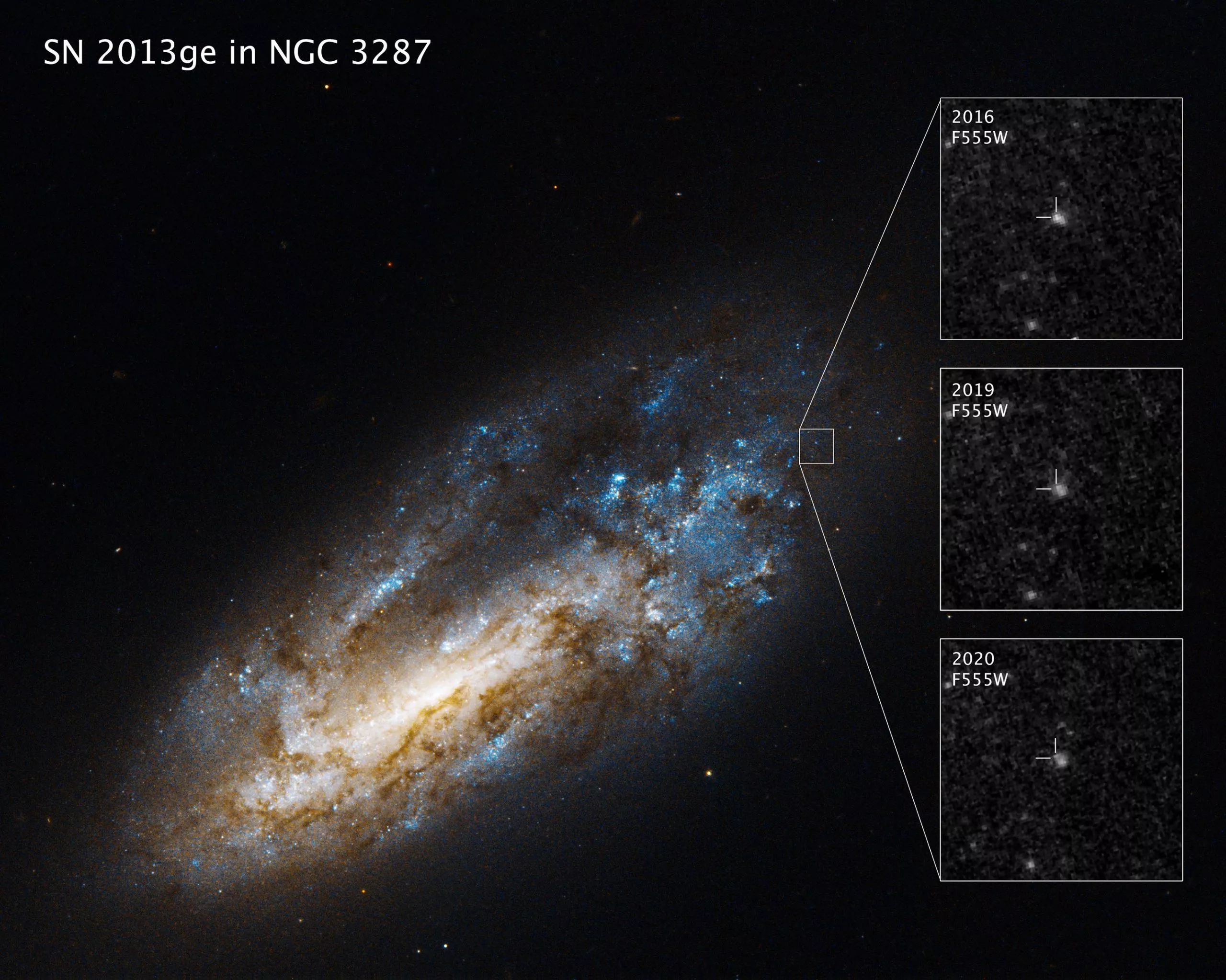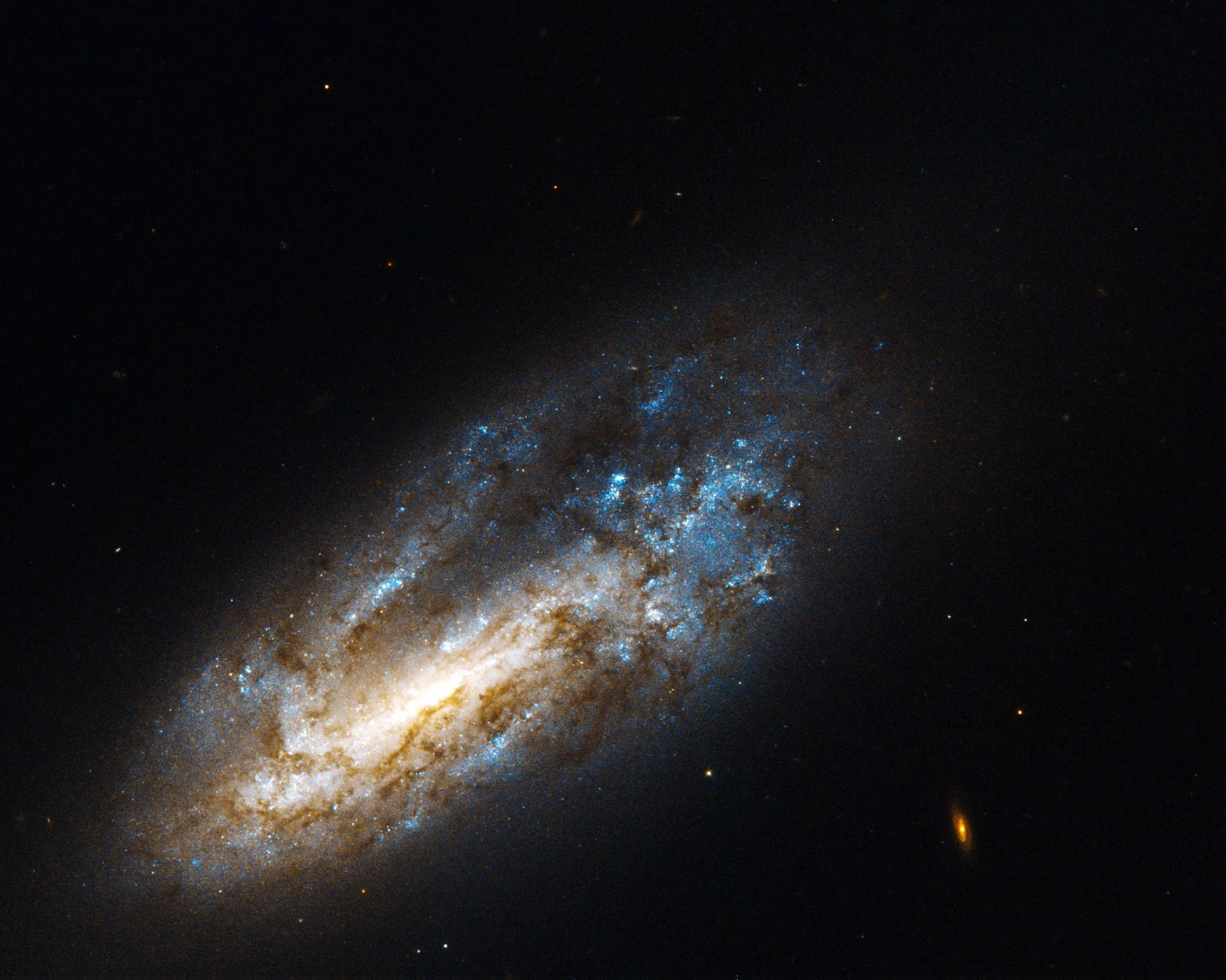The discovery of a surviving star at the scene of a huge supernova explosion is not unheard of, and a supernova explosion is expected to annihilate everything around it, but the latest research from the Hubble Space Telescope provides a long-awaited clue to the death of a particular type of star. In some supernova cases, astronomers have not found traces of hydrogen in the outermost layer of the former star. So what happened to the hydrogen there?

In this regard, researchers suspect that companion stars are the culprit - sucking away their partner's shell before they die - which is supported by a surviving companion star found by Hubble at the supernova scene in 2013. This discovery also confirms the theory that most massive stars form and evolve in the form of binary systems. This may also be the prequel to another cosmic Drama: over time, the surviving massive companion stars will also experience a supernova. If the residual cores of the two stars are not thrown out of the system, they will eventually merge and produce gravitational waves, which will shake the space structure itself.

NASA's Hubble Space Telescope found a witness at the scene of a star's explosive death: a companion star previously hidden in the strong light of its partner's supernova. The discovery is the first for a special type of supernova in which the star is stripped of its entire outer gas envelope before exploding.
This discovery provides key insights into the binary nature of massive stars, and it is also a potential prelude to the final merger of companion stars. It will oscillate in the universe as gravitational waves and become ripples in the structure of space-time itself.
Astronomers detected the characteristics of various elements in supernova explosions. These elements are layered like onions before a supernova. Hydrogen exists in the outermost layer of a star. If hydrogen is not detected in the consequences of a supernova, it means that it was stripped away before the explosion.

The reason for the loss of hydrogen has always been a mystery. Astronomers have been using Hubble to find clues and test theories to explain these stripped supernovae. The new Hubble observations provide the best evidence to support the theory that an invisible companion removed the gas envelope from its companion before the explosion.
"This is the moment we've been waiting for to finally see evidence of the ancestors of completely stripped supernova binary systems," said ori fox, an astronomer at the Space Telescope Science Institute in Baltimore, Maryland. "Our goal is to move this research field from theory to data to see what these systems look like." Fox is the chief investigator of the Hubble research program.
Fox's team used Hubble's third generation wide area camera to study the ultraviolet supernova 2013ge region and previous Hubble observations in the Barbara a a. Mikulski file (MAST). Astronomers have seen that from 2016 to 2020, the light of supernovae will gradually disappear over time - but an ultraviolet light source near the same location maintains its brightness. This potential ultraviolet emission source is the surviving binary companion of Sn 2013ge proposed by the research team.
In pairs
Previously, scientists speculated that a strong wind from a massive protostar might blow away its hydrogen envelope, but the observational evidence did not support this. To explain this disconnect, astronomers have developed theories and models. It is understood that in these theories and models, a twin partner will draw away hydrogen.
"In recent years, a lot of different evidence tells us that stripped supernovae may have formed in binary stars, but we haven't really seen companion stars yet. Most of the work of studying cosmic explosions is like Forensic Science - looking for clues to see which theories are consistent. Thanks to Hubble, we can see this directly," said Maria drout of the University of Toronto, a member of the Hubble research team.

In previous observations of Sn 2013ge, Hubble saw two peaks in ultraviolet light, rather than only one in most supernovae. Fox said that one explanation for this double brightness is that the second peak shows what happens when the supernova's shock wave hits a companion star, which now seems more likely. Hubble's latest observations show that although the companion star has been significantly impacted - including the hydrogen it absorbs from its partners, it has not been destroyed. Fox likens this effect to a bowl of shaking jelly, which will eventually return to its original form.
Although more confirmations and similar supporting discoveries need to be found, fox said that the significance of this discovery is still very large, which supports the theory that most massive stars form and evolve in the form of binary systems.
One worthy of attention
Unlike supernovae, which have a fluffy gas shell that can light up, it has proved difficult to identify supernova protoplasms that have completely stripped their cladding in the image before the explosion. Now, astronomers have been lucky enough to identify the surviving companion stars. They can use it to push back to determine the characteristics of the exploding stars and get an unprecedented opportunity to watch the consequences unfold with the survivors.
As a massive star itself, Sn 2013ge's companions are also destined to experience a supernova. Its former partner may now be a compact celestial body, such as a neutron star or a black hole, and this partner is likely to follow this path.
The distance between the original companion stars will determine whether they will be together. If the distance is too far, the companion star will be thrown out of the system and wander alone in our galaxy. This fate can explain many seemingly lonely supernovae.
However, if these stars are close enough to each other before the supernova, they will continue to orbit each other as black holes or neutron stars. In this case, they will eventually spiral towards each other and merge, producing gravitational waves in the process.
This is an exciting prospect for astronomers because gravitational waves, a branch of astrophysics, are just beginning to be explored. They are the waves or ripples of the space-time structure itself, which was proposed by Albert Einstein in the early 20th century. Gravitational waves were later directly observed by the laser interferometer gravitational wave observatory (LIGO).
"With the surviving companions of Sn 2013ge, we may see the prequel of the gravitational wave event, although such an event will still be in the next billion years or so," fox said.

Fox and his collaborators will work with Hubble to build a larger sample of surviving companion stars of other supernovae, actually providing some companionship to Sn 2013ge again.
"In addition to understanding the supernova itself, there is great potential. Since we now know that most massive stars in the universe are formed in the form of binary star pairs, the observation of surviving companion stars is necessary to help understand the details behind binary star formation, material exchange and coevolutionary development. This is an exciting moment to study stars," fox said.
"Understanding the life cycle of massive stars is particularly important to us because all heavy elements are cast in their cores and through their supernovae. These elements make up most of the observable universe, including what we know as life," added Alex Filippenko of the University of California, Berkeley, co-author of the study.
It is reported that these results have been published in the Astrophysical Journal Letters.